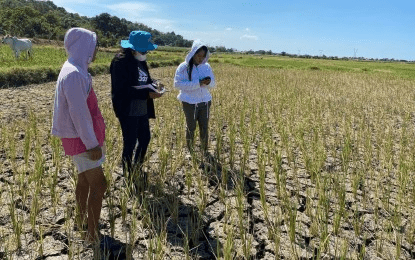By Ruth Abbey Gita-Carlos

MANILA – The likelihood of La Niña developing by the second half of 2024 will prolong the drought condition until August and delay the onset of the rainy season, Science and Technology Secretary Renato Solidum said Tuesday.
In a Palace press briefing, Solidum said the increasing probability for La Niña’s occurrence in the June-July-August season is at 62 percent.
He said that while the El Niño phenomenon will transition from “strong” to “neutral” by April-May-June season, hotter and drier conditions will still likely persist until August.
Solidum said that in August, around 10 provinces in the country will likely experience drought, one to suffer from dry spell, and two others to feel the effects of dry conditions.
“Because of the possibility of La Niña and the fact na (that it is) dry and hotter, mapu-prolong niyan ‘yung mga month na meron pang drought condition hanggang August (the months that there will be drought condition will be prolonged until August),” he said.
“So, our actions before were intended ng parang second half lang ng year, [pero] kailangan nating ipagpatuloy hanggang (just for the second half of the year but we have to continue until the) third quarter for the El Niño and drought effect,” he added.
As of March 24, around 37 provinces experienced drought conditions, 17 were under the dry spell and 13 felt dry condition, Solidum said.
Solidum said about 48 provinces will likely be affected by drought by April and will increase to 54 by May.
The number of drought-affected areas will decrease to 25 and 23 by June and July, respectively, he said.
“There will still be some provinces to be affected by the combined effect of El Niño and the preparation for La Niña which would bring in less normal rainfall. Hence, we need to continue doing the operations for El Niño preparedness but also keeping in mind that we need to prepare for La Niña in the second half of the year,” he added.
Typhoons to enter
Analiza Solis, chief of the Climate Monitoring and Prediction Section at the Philippine Atmospheric, Geophysical and Astronomical Services Administration (PAGASA), said around 13 to 16 typhoons are expected to hit the Philippines in the fourth quarter of 2024.
Solis said the number of tropical cyclones that will make landfall this year is “below normal” than the average 19 to 20 typhoons that usually enter the country.
Solidum underscored the importance of government and public preparedness given the shorter lead time to take the appropriate actions to mitigate the possible effects of the typhoons that will hit the country.
“People should really make sure that they are always ready,” he said. “Itong bagyo, mas malapit, mas kaunti lang ang panahon nating maghanda so dapat handang-handa tayo parati sa mga bagyo (We have less time to prepare so we must always be prepared for typhoons).”
Mitigation efforts
In preparation for the prolonged effects of the combined El Niño and preparation stage of La Niña, Solidum said standby deepwells will be reactivated to ensure the sufficient water supply during the dry conditions.
This, as Solidum cautioned that the water level of farms in the country would be at the “critical” level by May.
“Kaya itong mga deep well ay makakatulong sa pagbibigay ng dagdag na volume ng water. Alam ninyo naman na hindi natin pinagpatuloy ang paggamit ng mga deep wells sa mga lugar na mayroon ng supply ang dalawang concessionaire (So these deep wells will help in providing extra volume of water. You know that we have not continued the use of deep wells in the areas where the two concessionaires have supply),” he said.
“Iniingatan din natin na gumamit ng deep well kasi kapag sobra ang gamit ng tubig ay may epekto sa ground. So kaya nga mina-manage muna kung kailan ito io-operate at binabantayan nang mabuti (We are also careful in using a deep well because when we use too much water, it has an effect on the ground. So, we first manage when to operate it and we are monitoring it carefully),” he added.
Solidum said the Department of Agriculture is also monitoring the supply of basic commodities and agricultural products to ensure food security amid the El Niño phenomenon. (PNA)




